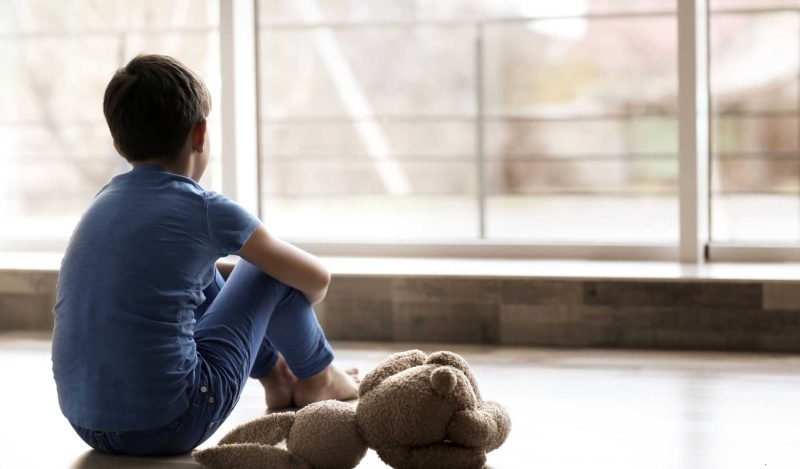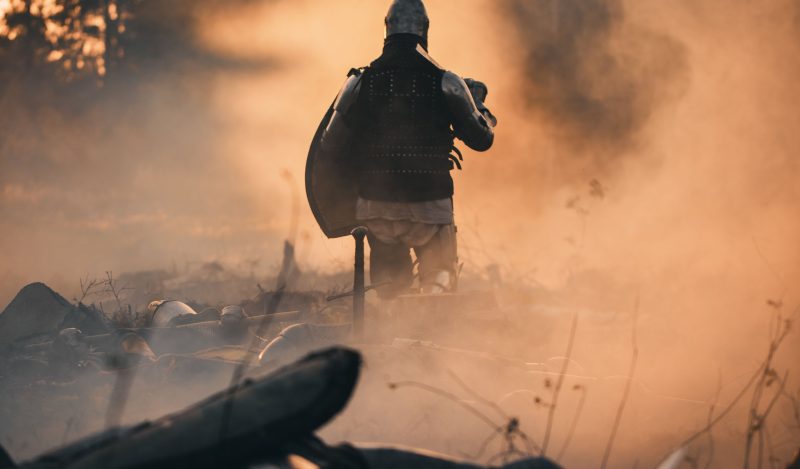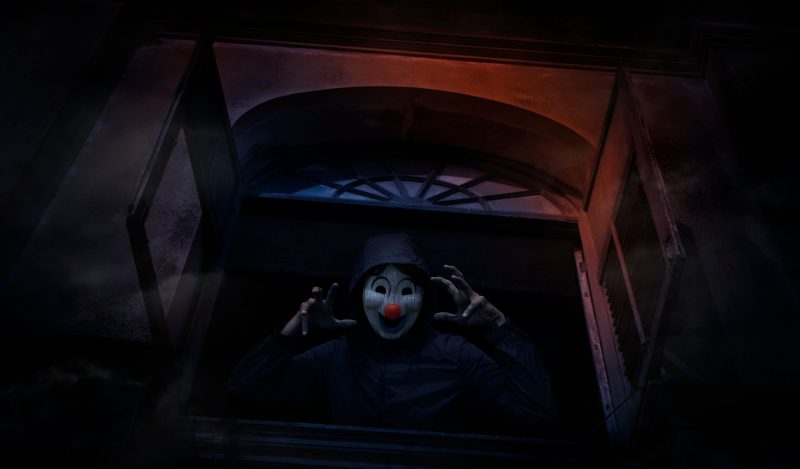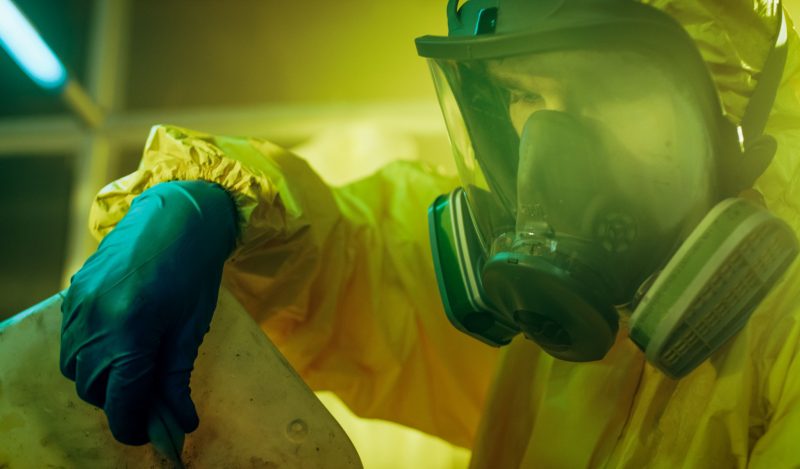Of all the many various pandemic abominations – and there is no shortage to choose from – the victimization of children stands above the rest as a uniquely horrific defilement of fundamental human virtue and conscience. It is a particularly heart- wrenching evil that has rather shockingly become endemic in society today.
Somehow, it has become normalized not only to institutionalize grotesque child abuse, but to go so far as to exclusively target children even as the adults were largely set free from the yoke of various oppressive torments inflicted under the aegis of the Orwellian “public health” regime.
Thus the specter of New York City mandating masks exclusively for TODDLERS in preschool even as older children were allowed to go mask- free. It is difficult to conjure up a more gruesome and frightening victimization exclusively of the truly defenseless and vulnerable.
I came across the following video a few days ago, well worth watching in full, that crystallized for me one of the impediments blocking people’s realization of this as bloodcurdling child abuse.
Yes, it definitely tugs at your heartstrings.
However, it does not resonate with a clear and overwhelming horror in the way something like the barbaric ISIS auto-da-fé of the captured Jordanian pilot does (I’m not saying masking children is literally like burning them at the stake, just illustrating something that is a clear, unambiguous and defined sense of overwhelming horror). The incongruencey between the reality of child masking vs how it appears enabled people to be easily brainwashed and block out what would otherwise be an instinctive empathy and sense of gross violation of basic right and wrong.
There are three basic reasons why there is this disconnect between the objective inhumanity of child- masking and its superficially far more ‘benign’ appearance to people.
The first reason is that the emotional and psychological torment of masking is not something that is easily articulated. Put it this way: even for adults, it can be very challenging to identify the specific psychological or mental torts that elicit the often-profound distress many people suffer on account of being coerced to wear masks. It is considerably more difficult for adults to truly grasp what the experience of forced mask- wearing is like for a child, as adults are typically far removed from their own childhood experience and what little recollection they have tends to be vague and bereft of critical emotional context and details.
The second reason is that children express a level of discomfort that does not reflect the magnitude of the damage and torment suffered. The above video is a perfect illustration of this – the toddler is reacting with typical toddler antics that are well within the range of displeasure normally expressed by a toddler in response to all manner of things he is unhappy about. It does not superficially convey the psychological mutilation that is occurring on account of the mask.
The third reason is that it is incredibly difficult for people to accept that a ‘civilized’ society could possibly fall for and engage in scientifically irrational or morally depraved behavior as a society. People intuitively and subconsciously assume that a civilized society would never, ever, ever deliberately and willfully choose to do something beyond-the-pale delusionally insane or wicked. People similarly have a profoundly difficult time admitting they can be wrong, especially about something that is a component of their identity or world view. So the very act of masking children en masse “proves” to people that it cannot possibly be akin to voodoo mysticism or be morally demented.
It is therefore crucial to be able to convey a child’s experience through the eyes of the child in order to communicate to people still “in the dark” a genuine sense of the damage caused by the masking, and to internally harmonize their dissonance between the objectively irrational nature and depraved cruelty of masking children versus their own internalized assumption that it is not “beyond the pale” in any way.
(Note: I chose the details with the intent to convey specific points that are often very subtle. What I’m trying to convey is the sense of the experience of a little kid, with the unique ‘flavors’ that it would have as experienced by a little kid.
One more point;, there is no ‘average’ or representative story for kids in general, there is way too much variety from one child’s environment and experience to the next, so I had to create a profile that is not representative of the specific contours of a ‘general’ or shared experience. I did very loosely base it somewhat on a composite from a few of the stories related to me by brokenhearted parents.)
I previously wrote an article trying to highlight some of the more striking and salient harms or distresses suffered by children from forced masking. (I received a number of emails afterwards from parents telling over in brutal detail the gut-wrenching stories of how their children were psychologically ravaged by mask-wearing.) However, that was more of a list of harms in the abstract and less so a narrative description of experiencing them.
What follows are “excerpts” from a day in the life of a fictional child, who we’ll call Mason¹.
A day in the life of a masked child
As the car pulled up to the school entrance, 5-year-old Mason felt the usual really strong sad feeling that he felt every day.
“Mason, put your mask on now,” said his mother.
Once upon a time, Mason used to cry and refuse to put on his mask. It was very uncomfortable for him, it was itchy, it was wet and slimy, and it smelled really bad. And when the mask was over his nose, it made breathing feel strange, and usually Mason would start to feel a little tired or weak after a few minutes because it was hard to breathe through the mask.
That was months ago though. Mason had long since stopped resisting, and now simply did as he was told by his mother, dutifully pulling the mask over his face.
Mason would feel extra sad every day when his Mommy told him to put his mask on before getting out of the car. He didn’t understand why though. Sometimes he thought to himself why Mommy made him do something that made him feel so sad and alone. Mason wanted so badly for his Mommy and Daddy to go back to how Mommy and Daddy used to be.
In fact, when Mason drew masks over a baby cow and flowers in a picture a few days ago and his teacher asked him why the flowers had masks on, Mason replied “Because they’re sad that the baby cow’s Mommy and Daddy don’t love him anymore.”
As Mason pushed open the car door, he thought about when Mommy used to kiss him goodbye with a smile and wave to him every morning as he walked up the steps to school. It made him very very sad to remember that though, because it hurt a lot, and Mason couldn’t understand why Mommy loved him less now than she used to.
Mason walked up the steps clutching his lunchbox, past the mean lady who stood outside watching all the children entering the building every morning. Mason was scared of her. She yelled at him when his mask wasn’t all the way on the top of his nose. She yelled at a lot of the other children too. She would scream at him that he made the school a bad place that would make people get very sick because he was there. She even told him in front of the whole school that he should just stay home, which made Mason want to run away and hide in the trees next to the school because he was so embarrassed.
This was the worst part of walking into school every day for Mason; he felt weak and shaky when he was around her because she made him feel so scared and hurt.
As he walked inside the school building, Mason looked at the clock on top of the window to the office where the other mean lady sat. He always looked at the clock, because he liked to watch the hands of the clock move around the clock. They always moved the same way. Mason sometimes imagined that the clock fingers were Mason, Mommy and Daddy because it made him feel better how the clock fingers were always the same clock fingers every day and moved the same every day. He knew that when all the fingers were pointing straight up at the big purple “12” on the clock in his classroom it was naptime, and he could take his mask off!!
Mason walked inside the classroom with the other children in his class in single file. Mason counted three floor squares between himself and the girl with the glasses and brown hair in front of him. They had to stay at least three square tiles away from every other person. If they didn’t, the teacher would yell at them.
Mason had gotten so used to counting tiles that he now always counted tiles, sometimes even at home. He didn’t want to get Mommy or Daddy sick, and all the teachers in school said every day that if he didn’t stay at least 3 tiles away from another person, he would make everyone get sick.
Mason wondered why the office lady who used to be so nice was so mean this year, until he saw her one day without her mask on and she wasn’t the same lady that used to sit at the office window. Mason had tried to tell Mommy about the strange new mean lady in the office but Mommy didn’t care, and even got upset at Mason when he said that the lady’s mask wasn’t on all the way.
Since then, Mason wasn’t sure that his teacher was the same teacher every day. He had never seen her without her mask on. She sounded different sometimes. And she kept getting his name wrong.
This left Mason feeling like the teacher was a stranger who he should stay away from as much as he possibly could, and certainly not someone who would be nice to him.
Mason was very happy when the teacher said it was nap time. Mason pushed his mask down from his nose. It felt so good to do that.
Mason looked at the clock and wished that nap time could be the rest of the day. When he thought about the end of nap time, he suddenly felt a strong sad feeling that made him want to disappear. Mason really wished he could stop feeling at all. This made Mason feel very confused and tired. He couldn’t wait until the teacher turned off the classroom lights and he would go to sleep and the sad feelings would go away.
Mason heard someone talking to the teacher. He opened his eyes, and looked around the classroom. The lights were still off, but the teacher was standing by the door talking to someone that Mason couldn’t tell who she was through her facemask.
Mason looked out the window. A bird was flying right past the window making bird sounds. He wished he could fly like the birds. The birds had friends they could talk to in bird language, and never had to wear masks. Watching the happy birds flying wherever they wanted to, and without masks on, Mason thought his life felt like a really really long cold and dark, but not all-the-way-dark hallway that never ended and all the doors were locked.
Mason wasn’t paying attention to what the teacher was saying; instead he had put a crumpled up piece of paper inside his mask, and was pushing it into the mask and letting it snap back into his finger (or lips) so that the mask came off his face a little. Mason felt happy and lighter as he felt fresh air on his face every time he pushed the block into the mask. It felt so good to breathe after wearing his smelly yicky mask for so long.
“MASON!!”, screamed his teacher suddenly, “MASON!! STOP THAT!! YOUR MASK HAS TO STAY ON!! DO YOU NOT CARE IF YOU GET SALLY SICK? OR TIMMY? YOU’RE BREATHING RIGHT ONTO THEM!!!”
Mason felt big, hot tears come down his face. Mason dropped the crumpled paper and pulled his mask around his face and looked at the floor so that nobody could see him crying. Mason rocked back and forth in his chair hoping that the teacher would finally stop screaming at him already. Mason wished he could crawl back under his blanket in his bed at home right there. He was just feeling so sad and hurt.
Mason thought to himself, maybe I am just bad. He didn’t want to get Sally sick. So why couldn’t he stop himself from making everybody sick? Mason thought maybe he was a walking sick-monster making everyone sick. He looked over at Sally, with her blond hair-tails and glasses. Mason once asked Sally how she could see through her glasses. Mason couldn’t see Sally’s eyes through her glasses. They were always covered with wet stuff like when Mason would blow on the closet door mirror at home and draw on it with his finger. Sally had started to cry when Mason asked her, and then a teacher (she looked to Mason like a teacher anyway even though Mason wasn’t sure, maybe she was one of the ladies who was in the adult [office] rooms all day) came over and screamed at Mason for talking during lunch, even though they were about to go inside and Sally and Mason both had put their masks back on.
Mason got off the bus in front of his house. He walked slowly up the steps to the porch. Mason felt sad and tired. He felt sad every day after school because school was so sad and bad. At least he didn’t have to wear his mask when he got home.
Mason tried to open the front door of his house but it was locked. Mommy was probably talking to the people on the computer from work, and Daddy didn’t come home until later. Mason knocked on the door but nobody answered. Mason felt so alone and confused, and also hungry, so he just sat down on the step in front of the door. Then he started to cry. Mason didn’t know why he was suddenly crying, but he couldn’t stop himself. He just sat there crying. His tears soaked his mask but was too tired to care about pulling it off. He just sat and cried.
With the above depiction fresh in mind, watch this again.
And this first-person description from a UK high school student:
The above fictional account was only highlighting a few bits of a 6-8 hour school day.
Imagine this happening every day.
For a week.
A month.
2 months.
3 months.
5 months.
A whole year.
What have we done to our children???
Ultimately, masking children – and the other forms of social isolation forced upon them – is a question of ‘moral’ science, not physical science. And there’s no “question” about this issue.
Seeing or hearing about this barbarity breaks one’s heart.
Experiencing it breaks one’s soul.
A bit of introductory background:
A baby is not born into the world with a sense of being loved and cherished, or of the intrinsic goodness of life. It has no sense of security that it will be supported, helped, or guided as it grows up, as it navigates the obstacles of life.
Birth is if anything a traumatic experience of sorts as a baby is literally shoved (or yanked) out from its comfortable cocoon into a radically different and unfamiliar environment; the reliable consistency of the physical characteristics of the womb are replaced by a comprehensive assault on its senses of strange new but intense colors, sounds, smells, and sensations.
A baby is furthermore utterly helpless; it starts out being unfamiliar with its own body, having little control of its limbs (with the exception of its mouth).
A baby also begins with no intellectual comprehension of itself, its environment, or its experiences. Its existence is a series of emotions and sensations – hunger, satiation, tiredness, alacrity, physical comfort and discomfort, emotional distress and security.
A child’s sense of self-worth, security and being loved – or lack thereof – takes shape and evolves from day one. Mommy picking up and consoling her distressed infant is more than just reassurance in the moment; it is a child’s first experiences of raw, unadulterated love, mercy, compassion, tenderness, kindness – amidst an existence that is confusing, unintelligible and dark. An infant is constantly assaulted by one discomfort after another as it repeatedly cycles through hunger, tiredness, emotional distresses and constantly evolving physical abilities and characteristics.
A child continues to be dependent on his parents as his anchor in a turbulent world, especially for the ability to tolerate pain and distress. To a toddler, even relatively trivial physical pain and injury is frightening – its world suddenly and abruptly went from nice and pleasant to suffering. A child – especially a younger child – experiences transient physical pain as far more than the physical discomfort of the injury. It is an experience of the cruelty of the world, of nature, against him.
Observe when a toddler runs straight to his mother upon getting a ‘boo-boo’ and hangs on as if for dear life – this is as much animated by the child’s distress at being subject to what feels like an uncaring brutal and/or cruel existence as it is by the physical discomfort. The toddler needs his mother to provide security and comfort – reassurance – that he has not in fact been surrendered to the cruelty and predations of an uncaring universe.
A child needs to experience compassion, mercy, kindness, love and caring in order to relate to himself and to the world as fundamentally good. A child bereft of this grows up experiencing deep emotional trauma and scarring.
Parents passively allowing their children to be tormented by the mask regime (and other isolation measures) create a profound break in their children’s sense of stability generally, and sense of trust and stability in/of their parents’ love and commitment to them. They will not understand ‘Why are Mommy & Daddy letting all this horrible stuff happen to me???’
This is to say that much of the damage of the mask/social isolation regime depends on the actions and disposition of the parents.
Published under a Creative Commons Attribution 4.0 International License
For reprints, please set the canonical link back to the original Brownstone Institute Article and Author.









